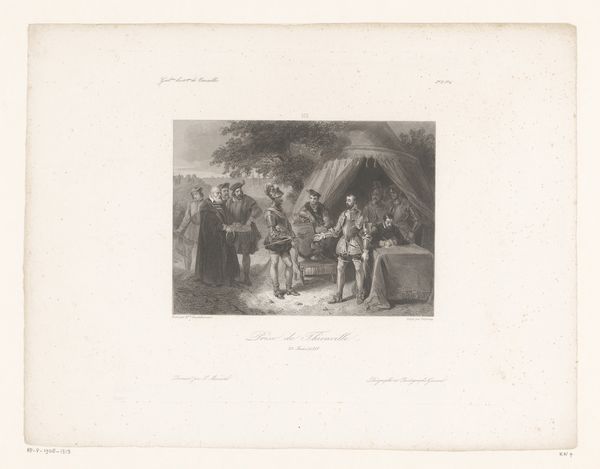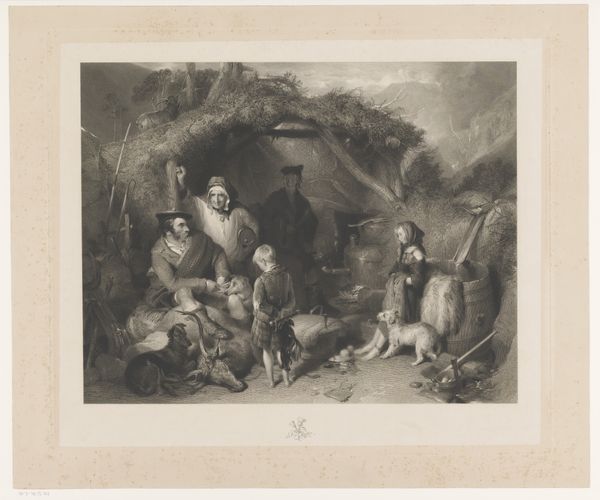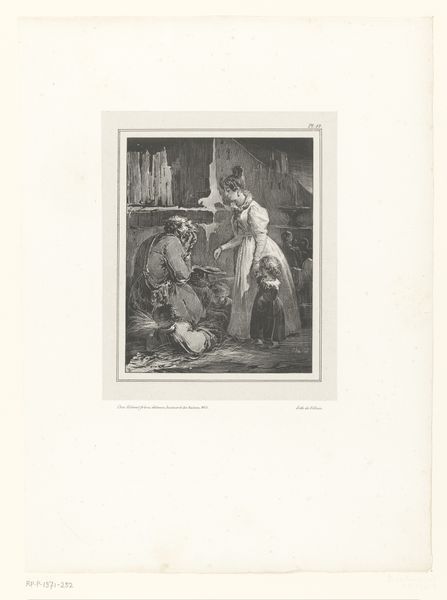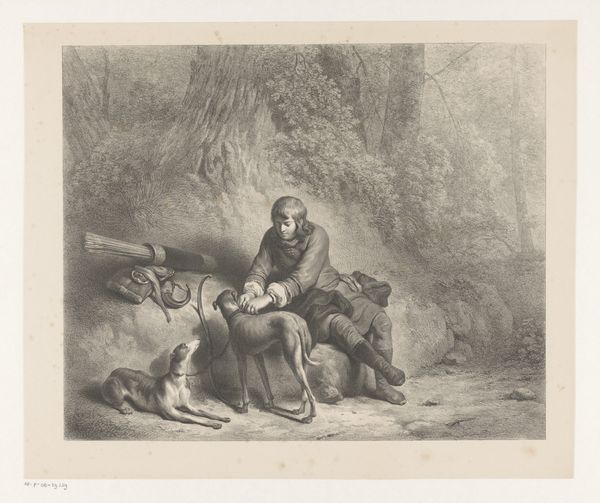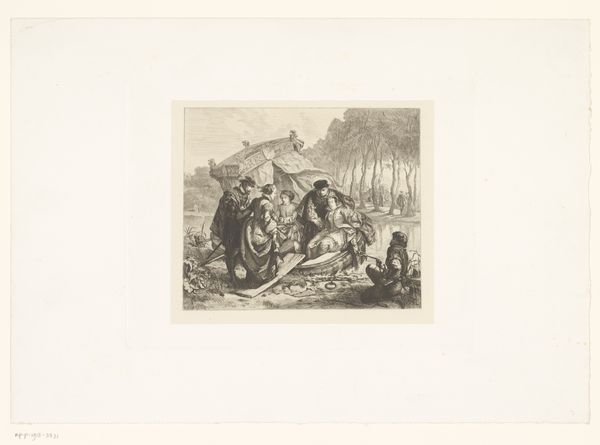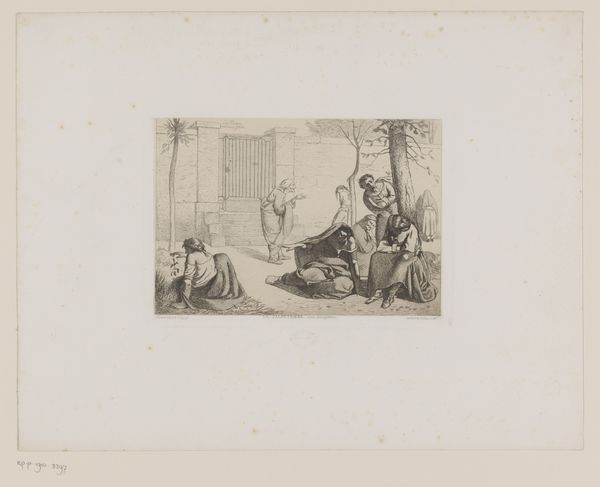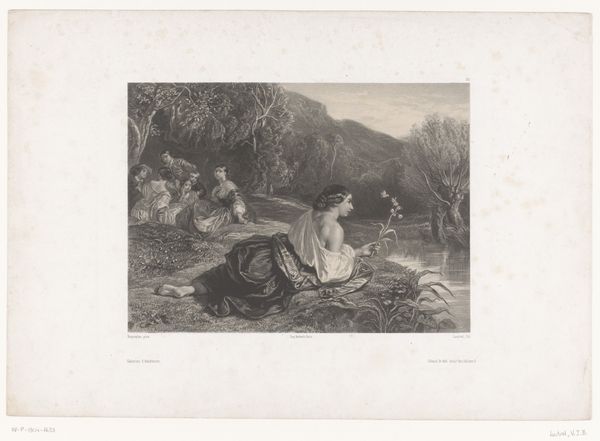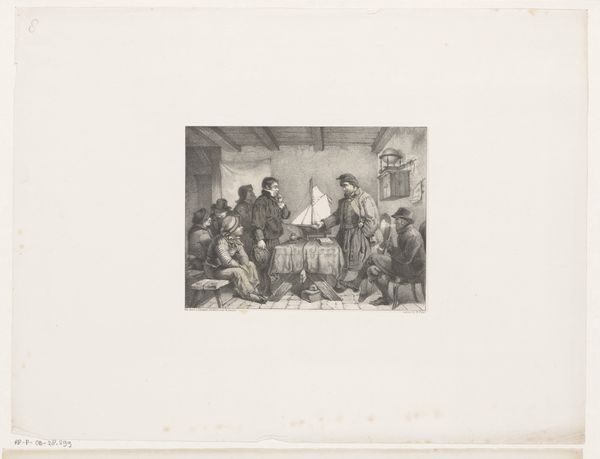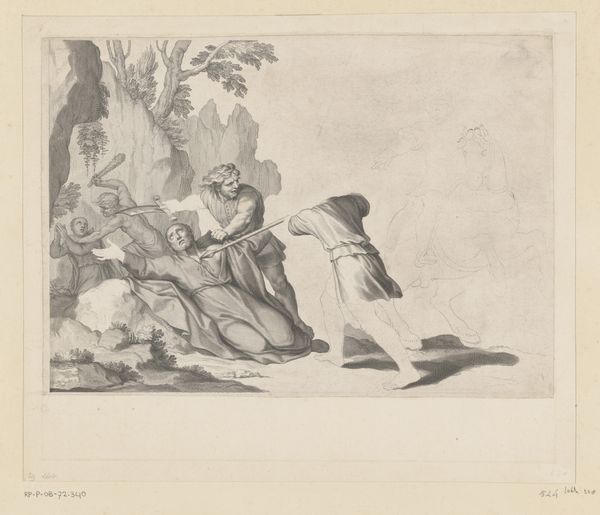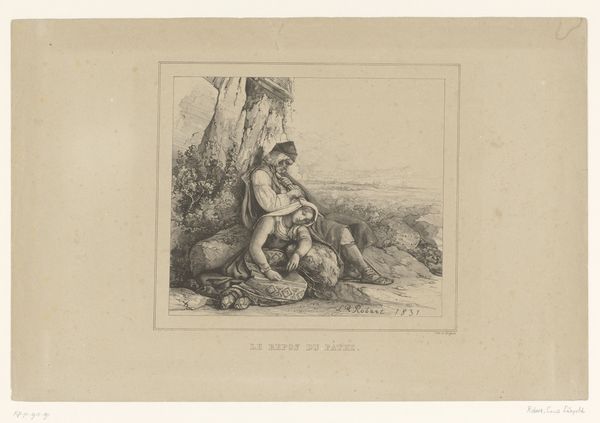
drawing, print, paper, engraving
#
drawing
#
narrative-art
# print
#
charcoal drawing
#
figuration
#
paper
#
genre-painting
#
history-painting
#
engraving
Dimensions: height 312 mm, width 445 mm
Copyright: Rijks Museum: Open Domain
Curator: This is "Two Soldiers Sitting and Drinking in a Cave," a print by Victor Jean Baptiste Loutrel, likely made between 1848 and 1862. The medium involves engraving, drawing and working with paper. Editor: My initial feeling is one of weary respite. The subdued light and shadowed interior evoke a sense of retreat, perhaps even secrecy. Curator: Note the careful rendering of the textures – the rough-hewn table, the worn armor, and the cavern walls themselves. These suggest the physical demands placed upon these soldiers, their resources being stone, metal and earthen surroundings. Look at the barrel in the background, its staves and hoops crafted with care. Editor: Yes, and the shared vessel on the table—almost a chalice. The act of sharing a drink transforms them from warriors to companions. Do you think this symbolizes brotherhood and the communal act of easing their burdens? Curator: It could signify both cooperation and sustenance. What tools and materials shaped this reality? We also cannot ignore how this image participates in a larger economy of prints intended for widespread distribution. How did this circulation influence ideas about military life? Editor: A very relevant point, because although at first glance it reads like simple camaraderie, the men's armor— particularly their helmets—evokes an era much earlier than the print's creation. Is this meant to idealize or perhaps mythologize warfare? The details matter: a discarded shield rests at their feet. Curator: Interesting... how does the positioning of their bodies around that makeshift stone table further represent shared burdens but unequal comforts. The creation of the print involved several specialized steps that speaks to artistic labor. Editor: And that classical urn or vase at the table's center! It serves as an iconographic bridge, connecting the men not just to each other, but also to a distant past—a romanticized, even glorified history of military virtue. Curator: So the interplay between the tangible, the imagined, and the manufactured all have an effect in shaping an artistic understanding of military activity. I like that observation! Editor: Considering how images themselves carry weight and convey stories over time is important and your breakdown helped underscore Loutrel's technique and social influences to see the symbols as deliberately constructed.
Comments
No comments
Be the first to comment and join the conversation on the ultimate creative platform.
